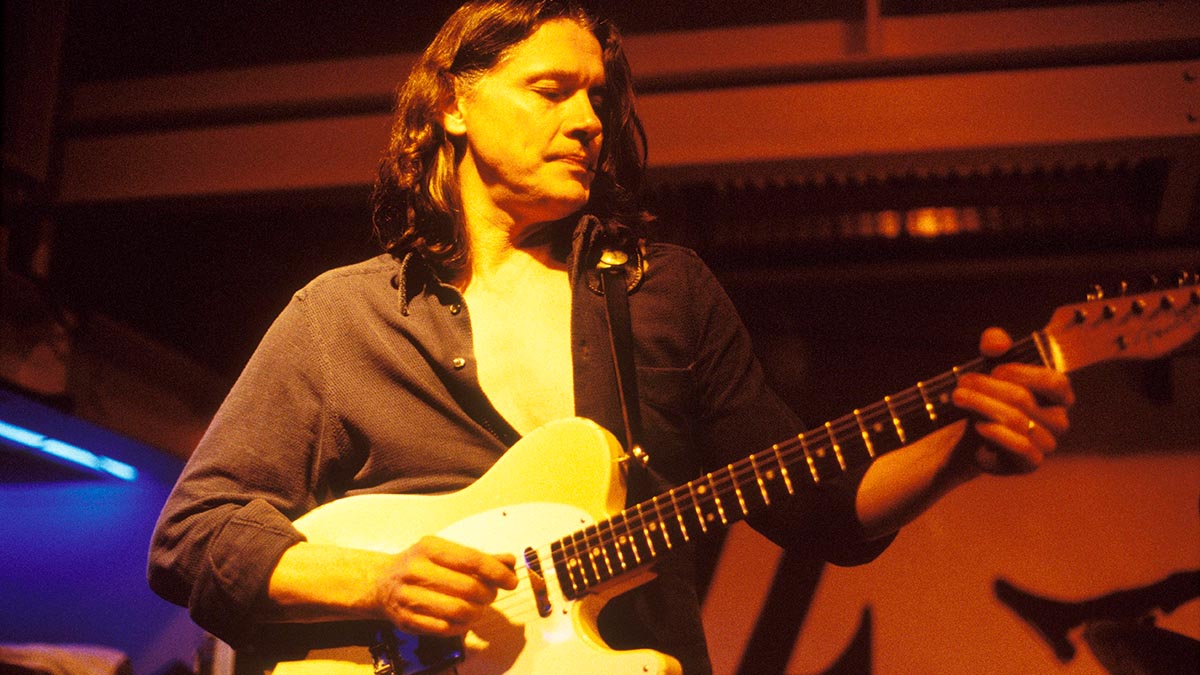Introduce jazz chops into your blues solos with this lesson in Robben Ford's masterful style
Have yourself a Ford fiesta of jazzy blues guitar with this lesson in the Dumble rumbler's solo approaches

Robben Ford’s style is highly individual. No-one plays quite like him, despite the fact that he has influenced much of the current crop of great blues guitarists. Unlike many blues players, Ford is also steeped in the jazz vernacular, and even played with the great Miles Davis.
As the more sophisticated elements of Robben’s playing are in some ways the most unusual, for this article I’ve focused on that area slightly more than the blues side. Rest assured though, that he is also a killer blues guitarist and has obviously studied the greats that came before him.
As with all blues players, it’s interesting to see how Robben navigates the chord changes. He is a master at it, and artfully states the colour tones of the IV chord while mixing in the tonic blues scale. He’s also quite partial to the use of the Lydian Dominant mode – this is where we add the #4 note to the Mixolydian (sing the Simpsons theme for a taster!).
It’s worth noting the way that we work through the V and IV chords here. This is another typical Robben move, and a nod to his blues influence. He hits the 6th and the root of the G7 (V chord) and swaps the E (6th of G7) for an Eb to change the pattern to so it works over the F7 (IV chord).
In our example, we use the C altered scale (C-Db-Eb-E-Gb-Ab-Bb) on the I chord before it hits the two bars of the IV chord. You can use altered extensions on a dominant 7th when that chord is resolving to another whose root is a perfect 5th below.
Unless you’re a really experienced jazz player, you’ll find it extremely difficult to make the altered scale work on a non-resolving dominant - for instance where the two bars of F7 move back to C7, F7 is very much not a perfect 5th above C7 and doesn’t make a dominant resolution. Try it – it sounds pretty bad, doesn’t it?
In example 3, we’re working around the chord tones of C with the 6th degree added. This is a common Robben move and has a sophisticated Dorian vibe, which is quite a jazzy sound. Then, by adding a chromatic approach note to the major 3rd we create the more typical bluesy effect.
All the latest guitar news, interviews, lessons, reviews, deals and more, direct to your inbox!
Try integrating these more detailed lines into your blues playing, but remember too much of the jazz stuff played over a blues can sound like you’ve walked into the wrong gig.
While there’s a lot of detail in the solo at the end of this lesson, you might want to view it as the second chorus of a solo on a blues – for the first time around the sequence, you might want to play more sparsely.
Get the tone
Amp settings: Gain 6, Bass 6, Middle 4, Treble 6, Reverb 4
Robben often uses a very fat and overdriven tone from his legendary Dumble tube amps, but here we’re keeping things cleaner. A touch of spring reverb for a fuller tone, and good overdrive pedal in front of a warm-sounding American style amp should do the trick. A bit of organic delay will add some sonic breadth – you could even try some subtle slapback.
Example 1. Bebop lick
Here’s a Robben-inspired bebop-flavoured line. Note how we work around the chord tones – this is all about targeting the strong tones.
Example 2. Altered scale lick
This one is based on the C altered scale, which features both sharp and flat 9ths and 5ths. This resolves nicely to the F7 chord in the next bar.
Example 3. Adding colour tones
This example works around the chord tones of C6 but adds some blues for colour – notice the b3 and the #11 in there, too. Approaching the major 3rd from a semitone below adds some typical bluesy colour.
Example 4. Targeting chord tones
Here’s how Robben might approach the V and IV chords. Even if there were no backing present, you could easily follow the underlying harmony due to Robben’s clever targeting of the chord tones. Also, by only slightly changing the pattern he shows great control over the shape of his solos.
Example 5. Tasty blues phrasing
Using the popular shape 1 of C minor pentatonic at the 8th fret, Robben likes playing a C blues scale (C-Eb-F-Gb-G-Bb) plus major 3rd (E) type phrase such as this.
Example 6. Full solo
Our solo shows how the blues elements and jazz-influenced lines can happily co-exist. Practise the ideas slowly, and carefully decide on your picking patterns.
A professional guitarist for many years, Andy G Jones has played with Van Morrison, James Ingram, Lamont Dozier, Queen (Brian May and Roger Taylor), Robben Ford, Billy Cobham, John Illsley (Dire Straits), KT Tunstall, Albert Lee (featured on Andy's upcoming CD), Mike Finnigan, Dave Landreth and Ryan Voth from The Bros. Landreth, Malford Milligan, The BBC Radio Big Band, Patti Austin, Hamish Stuart (Average White Band), Lalo Schifrin (Hollywood film composer Bullitt, Mission Impossible), Hank Marvin, James Dean Bradfield (the Manic Street Preachers), Grady Tate, Agnetha from ABBA, Cliff Richard, Dudley Moore, Nathan James (Inglorious), Joey Tempest (Europe) and Kelsey Grammar.


